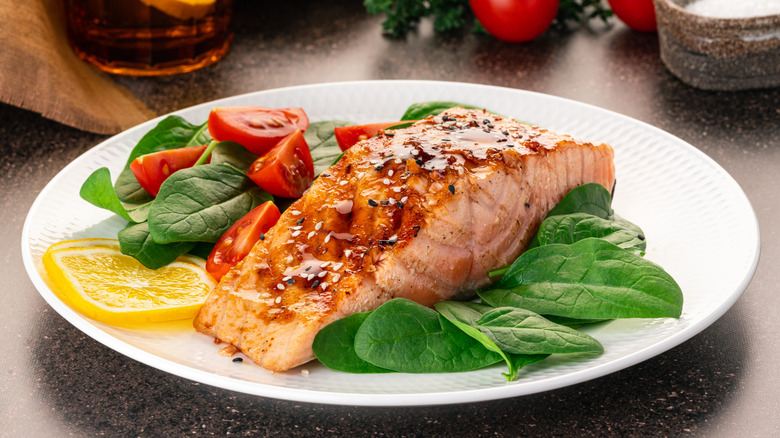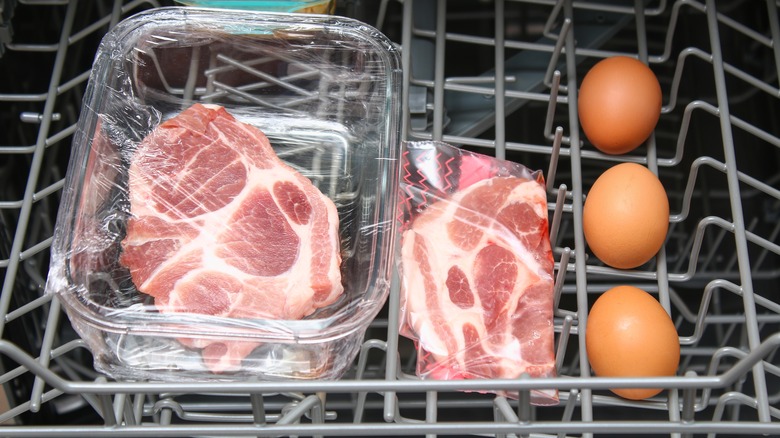Never Use This Dishwasher 'Hack' For Cooking Fish
Cooking can be hard and we, as humans, seemed destined to engineer and design around even the smallest of inconveniences — and the sheer number of alleged "food hacks" out there are a testament to this. While some can actually save time, money, or labor, there are also just as many that should be used cautiously if at all.
One such hack is dishwasher salmon (yes, you read that correctly), which comes to us courtesy of the Food Network's Bob Blumer. It's salmon, safely wrapped in aluminum foil, cooked in the dishwasher with dishes, soap, and all. Ever wish you could wash your dishes, and cook dinner simultaneously in one appliance? Well then you should keep waiting.
The Kitchn recommends the method, and compares the final results to a sous vide-prepared dish. Today, on the other hand, said that after a two-hour wash cycle, the only thing they found was clean dishes, and an undercooked filet. Consumer Reports says that this method is not recommended by most manufacturers, and may be an unsafe cooking method.
Why dishwasher cooking is a bad 'hack'
Consumer Reports consulted LG spokesperson Taryn Brucia about this hack. Brucia says that their products are not tested to be food safe, and will most likely not heat fish sufficiently to kill dangerous pathogens like salmonella. "Water temperature will not be as consistent in a dishwasher as compared to a stove," says Brucia.
According to General Electric Appliances, most dishwashers run optimally between 120 and 150 degrees Fahrenheit. The Spruce Eats notes that this falls close to the bacteria "Danger Zone." When food is cooked between 40 and 140 degrees Fahrenheit for two hours or more it actually creates an optimal environment for bacteria and pathogens to reproduce. According to Amazing Food Made Easy, any fish being cooked below that 130 degree mark is going to carry a certain amount of risk despite the method being used.
Because dishwashers are manufactured to clean food from plates instead of cook it, they won't maintain a consistent enough temperature throughout their cycles to keep food out of this danger zone.

